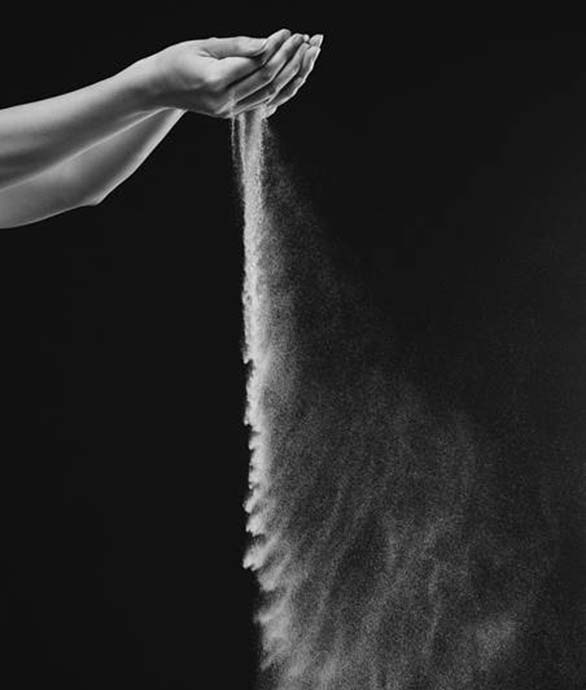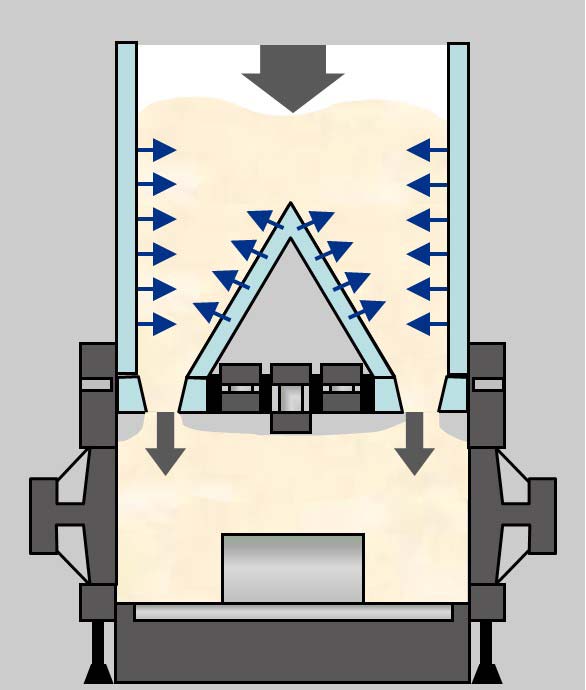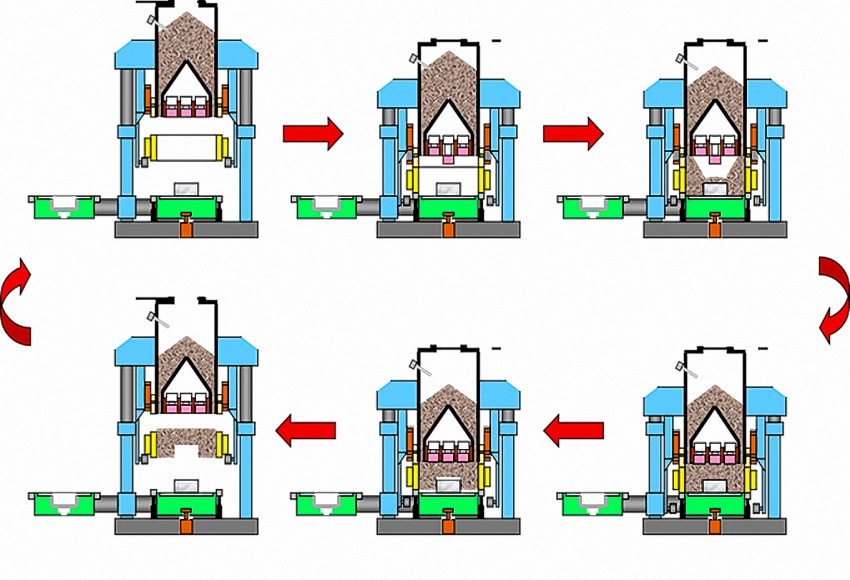

Sand filling as required – surplus sand is a thing of the past
Mould production with bentonite-bonded mould substances is and will remain an important element of the production of cast parts. In a time of ever-increasing demands for energy efficiency and the reduction of emissions from machinery and systems, aeration technology has established itself in many areas of green sand moulding systems. The moulding system with the fluidised sand filling process can be used with flask and flaskless moulding systems. With the compact and design-optimised movement processes, the system has redefined time and energy-related processes. The sparing use of resources has a positive effect on the energy balance of the company and simultaneously improves the productivity of the system through the back-coupling of individual processes. This ground-breaking technology for the future-oriented market is setting new benchmarks for green sand moulds.
The process
Sand filling that is kind to the model
With the aeration sand filling method, the mould sand is fluidised, the flow characteristics are significantly enhanced and the low pressure air enables seamless sand feeding. Furthermore, the speed of the sand throughput is sufficiently low – due to the slits arranged at the side of the compaction unit – so that the sand flows slowly and gently onto the model surface with low density. Accordingly, the phenomenon of bridging in areas with complex moulds and at the openings of small pockets is minimised. The sand flows slowly in the direction of the nozzles arranged on the floor of the pockets. The pouring density is constantly increased through the airflow effect. This enables sand filling with a high density in areas with complicated configurations and pockets with a low diameter.
The figure below shows, beginning at the top left, the steps default position, sand filling position, sand fluidising, pressing, separation process and turntable rotation.

The principle
When the expansion chamber is closed and sealed, the mould sand added to the machine hopper is charged with lubricating air via the open-pore wall plates and subsequently with filling air. Through this fluidising, the sand flows gently onto the model plate and in doing so also fills complex contours with pockets – supported by the model-dependant pneumatically extended contour stamp. The pressing process initiated by the lowering of the main cylinder is accompanied by a sliding in of the contour stamp. This results in an even increase in the pouring density of the sand over the model surface. The press on the model side closes and completes the moulding process through an additional lowering movement of the filling frame and the moulding flask is lifted from the model. At the end of the lifting movement, the hopper sand is refilled and the model change is initiated before the next mould cycle starts.
The advantages
Reduction in:
- cast weights
- model-related casting defects
- emission values (noise level, air pollution)
- energy requirements (power, air consumption, cooling water, oil quantity)
- model wear
- production downtimes
- cycle times
